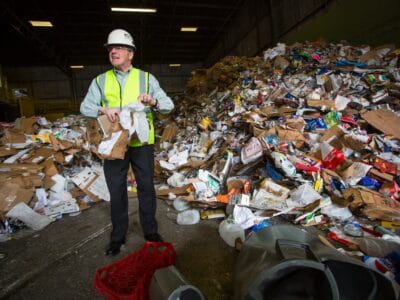![]()
Your Sustainable Journey Starts Here
Connect with sustainable businesses, discover eco-friendly solutions, find sustainable travel options, Learn, and make a positive impact in a sustainable way.
Explore Sustainable Business
Choose your path, whether you’re a conscious consumer, green founder, or impact supporter.
Agriculture and Food
8 Listings
Discover businesses transforming how we grow, source, and consume food — from organic farms to sustainable food suppliers.
Travel & Hospitality
10 Listings
Explore travel experiences and accommodations that prioritize people, planet, and culture.
Community & Services
3 Listings
Explore initiatives and businesses that serve local communities with a sustainability-first approach.
Health and Wellness
2 Listings
Businesses promoting health and balance through sustainable practices and natural products.
Renewable Energy
2 Listings
Find businesses and professionals leading the shift to renewable energy solutions.
Organizations & Government
2 Listings
Public and non-profit organizations committed to driving systemic change in sustainability.
Whether you’re running a green startup, a local eco-venture, or a purpose-driven project, NatNavi gives you the space to grow and connect. We believe sustainability should be visible, accessible, and celebrated. Listing your business here isn’t just about promotion, it’s about joining a movement where values matter as much as visibility. Our platform helps you reach conscious consumers, collaborators, and supporters who care about the planet as much as you do.
NatNavi makes it easy to showcase your impact. We simplify the listing process, highlight your sustainability efforts, and bring your business into a community that’s built on trust, transparency, and shared goals.
Insights & Stories for Sustainable Business Growth
Weekly dispatches from the frontlines of innovation, impact, and eco-business.

Build Your Sustainable Startup with UK Funding Support – Grants & Investment Backing for Projects Up to £3M (No Equity Needed)
If you’re building a sustainable startup and looking for real support, the UK has something worth your attention. Grants that…

This Software Engineer Quit IT to Grow Bamboo, Now He’s Building a Multi-Lakh Sustainable Business
Not everyone leaves a stable tech job to grow bamboo. But that’s exactly what Mr. Anutosh did. He’s a software…

Greenwashing vs. Green Business: Know the Difference
In 2025, claiming to be “eco-friendly” isn’t enough. Consumers have become smarter, regulators are more alert, and the stakes are…

How to Build an Eco-Friendly Brand From Day One
Building a brand from scratch is a rare opportunity to get everything right from the start. If sustainability is part…

10 Sustainability Certifications That Actually Mean Something
In a world overflowing with green claims, sustainability certifications are meant to offer clarity. But not all of them hold…

What Is a Sustainable Business? (And Why It Matters in 2025)
The definition of success is changing. Profit isn’t the only thing that matters anymore. A sustainable business is one that…

How ZeroAvia Hydrogen-Electric Tech Is Disrupting Aviation with Game-Changing Green Innovation
The race to decarbonize aviation is heating up, and one company is soaring ahead of the rest — ZeroAvia. With…
In the Spotlight – Verified Green Businesses
Discover purpose-driven businesses building a cleaner, better world.




Ready to Get Discovered?
List your sustainable business on NatNavi and connect with conscious customers. Reach conscious clients, investors, and changemakers through NatNavi’s green business directory.
Handpicked Eco Products
Shop sustainable products from ethical brands, making a positive impact.

Fire Organic Tote Bag | SOL’S Organic Zen 76900 Natural


You are Beautiful – Bio iPhone case | Biodegradable material
$15.54 Select options This product has multiple variants. The options may be chosen on the product page

Inspiration | Recycled blend Unisex Crewneck T-shirt
Price range: $15.00 through $22.35 Select options This product has multiple variants. The options may be chosen on the product page

Keep it simple | Organic Unisex Crewneck T-shirt
Price range: $20.47 through $22.75 Select options This product has multiple variants. The options may be chosen on the product page
Green Business Academy
Explore beginner-friendly guides, sustainability how-tos, and marketing lessons tailored for eco-conscious entrepreneurs.

Step into the Future with Energy-Harvesting Footwears
Burning fossil fuels has catastrophic recurrences worldwide, releasing carbon dioxide and greenhouse gases, which are leading to climate change and…

India and France Collaborate on Clean Energy Technologies
In a bid to boost cooperation on clean energy, India and France have inaugurated a workshop on Clean and Sustainable…

Ossus Biorenewables Secures $2.4 Million in Pre-Series A Funding for Green Energy Ventures
Transforming Green Hydrogen Production with OB HydraCel Technology Ossus Biorenewables, a Bengaluru-based start-up focused on green energy, has secured $2.4…

Researchers Generate Green Hydrogen from Seawater Without Pre-Treatment
Scientists Split Seawater and Generate Green Hydrogen from Seawater Scientists have made a breakthrough in the production of green hydrogen,…

Breakthrough in nuclear fusion technology to unlatch a limitless source of carbon-free energy
A recent announcement from the National Ignition Facility (NIF) United States in nuclear fusion technology has revealed a significant step…
Reviews
Discover in-depth, honest reviews of eco-friendly products and sustainable solutions.

Move over CNG Autos, Coz Apé E City Electric Vehicle will revolutionize Intercity Transportation.
Have you ever thought the rickshaw we always board for commuting from place A to place B contributes to city congestion with 10% CO² emissions? When an EV SUV is available, why not an EV for auto-rickshaws? Well, one company…

Rating: 4.3/5
Pedal Less, Glide More: Meet the Motovolt Kivo 24 E-Bike
Picture this: a serene morning, crisp air, the tranquil hum of nature. You’re cycling uphill. Your heart rate? Through the roof. Your calf muscles? Singing the song of their people. Enter the e-bike, a revolutionary innovation that took this picturesque…

Rough yet suave, the mXmoto MX9 guarantees 140 km on a single charge—your perfect electric bike
In the Indian market, the most brilliant idea for big giants is to team up with new companies who can share their expertise. They are nascent startups funded by venture capitalists and angel investors. To join this list is mXmoto,…




























